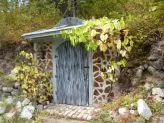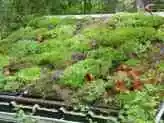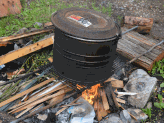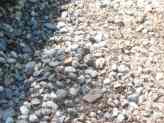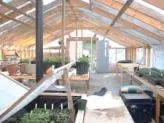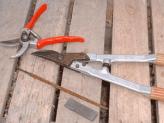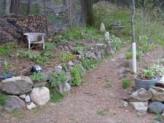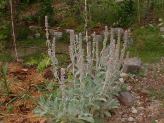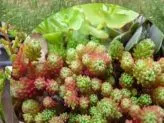How to choose?
Soil for green roofs has to have certain characteristics.
It must be light weight, have good water retention, and also good drainage.
It also needs to have some nutrient value, because most green roofs are built and then forgotten about.
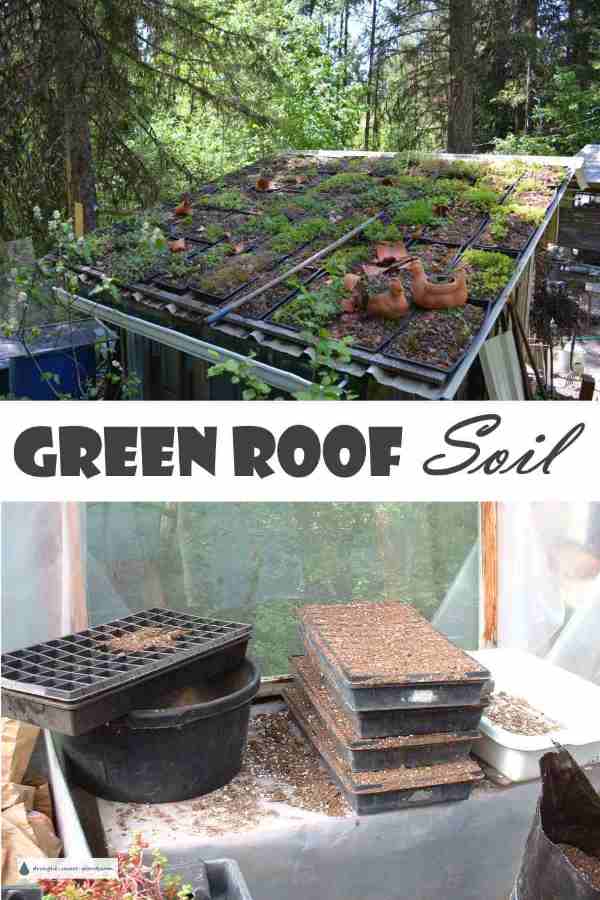
Engineered soil…
Recently, it was thought that the best soils for green roofs were engineered soils, or pasteurized peat based soilless media, with little emphasis on adapting it to local needs.
The main advantage to this type of soil on a green roof is its light weight and ease of handling as it comes pre-packaged in bales from a manufacturer.
Disadvantages are the lack of nutrients, and potential to become eroded by windy conditions or flooding. It also lacks microflora and microfauna, the tiny animals and plants that colonize a native soil.
Or Native soil?
There is now evidence that it’s advantageous to use soil native to the area and utilize the micorrhizae – the tiny animals, yeasts and bacteria. This will enable the soil to function more fully and as an indigenous soil, make it easier for wild plants, microflora and wildlife to colonize it.
Many green roof professionals recommend adding mycorrhizae and lightweight drainage material such as pumice to native soils.
This is the best of both worlds, as the native soil now has the ability to drain more fully, (its one drawback) and provides a symbiotic fungus which enables better root growth.
Another Option;
Then there is recycled soil from your containers and propagation, mixed with some compost or steer manure for nutrients.
I use mostly Sunshine Mix #4 for propagating hardy succulents, but only once. After that, I mix it for other mature plants – like the ones on my green roofs – this prevents diseases like damping off in subsequent crops.
Seedlings and cuttings are notoriously delicate, so reusing soil without pasteurizing it is not a good idea.
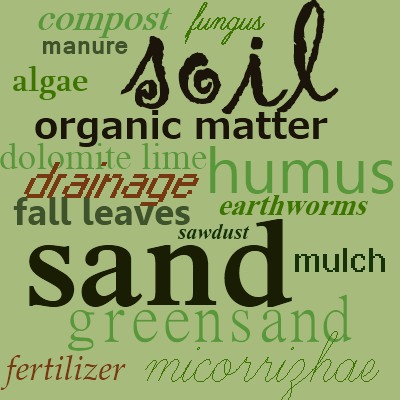
What kind of Mulch is best?
Regardless of which type of soil you decide to use, a mulch of lava rock or other stone will be beneficial.
Some green roof builders have concerns that the lava rock could potentially puncture the liner, but if applied correctly, this shouldn’t be a problem.
There will be a consistent layer of soil on the roof over the liner or root barrier, and once the plants are in place the mulch can be carefully put around the plants.
It’s not recommended to use wood based mulches such as wood chips, shavings or bark mulch due to the fire risk and the potential to be blown away by strong winds.
Some advantages to using lava rock mulch are:
- Colour – Most lava rock is either red or grey and will combine well with the colour of the plants.
- Good drainage around the crown of the plants.
- Water retention at the roots – I know, this seems to be a contradiction in terms, but the plants will grow much more uniformly if mulched due to the tiny bit of moisture retained by the mulch.
- Prevent the washing away or blowing away of the soil. This is very important when using an engineered soil with perlite or other light weight components.
- Low maintenance once installed. A small amount of additional lava rock mulch may be required over time.
- Weed control – most weed seeds require light to trigger germination, so shading the soil with mulch prevents them from growing.
- Small amounts of nutrients are constantly being released for the use of the plants so little to no additional fertilizer is required.
Fertilizer for Green Roofs
Fertilization of green roofs is very basic.
Most of the plants recommended for use on green roofs prefer a lean soil, only requiring a small amount of organic material initially.
After a few seasons the system should become self sustaining with the dropping of foliage and accumulation of dust particles from the air.
The best type of fertilizer is worm castings which are easy to spread and organic. One annual application will be adequate.
It’s unknown at this time if chemical fertilizers may potentially create an environmentally damaging run-off, but evidence is pointing in that direction.
It would detract from the whole purpose of attempting to enhance the environment, only to pollute local waterways with chemical run off from your green roof.
This is additionally important if you plan to capture the rainwater from your roof to use in irrigation.
My preference always is to choose an organic fertilizer for my plantings, and green roofs are no exception.
Green Roof Maintenance
The main care that your green roof will need is to assess the drainage periodically, and remove any buildup of organic material that may cause a fire risk.
Plants that potentially will need more care in this respect are grasses and herbaceous perennials which create debris around the crown.
Most green roof Sedum and other hardy succulent plants such as Sempervivum produce a very small amount of debris so this isn’t a concern.
The Bright Future of Green Roofs
The art of green roof building is still in its infancy, and much more experimentation will have to take place before it becomes a science.
Every day, new information is released from studies done on all aspects of green roofs, from tiny sheds to huge office buildings, giving even more impetus to green roofs.
More green roof professionals as well as home owners and gardeners like us are getting excited by this old yet new technology.
I hope to see many more green roofs of all kinds and sizes in my home town soon.

